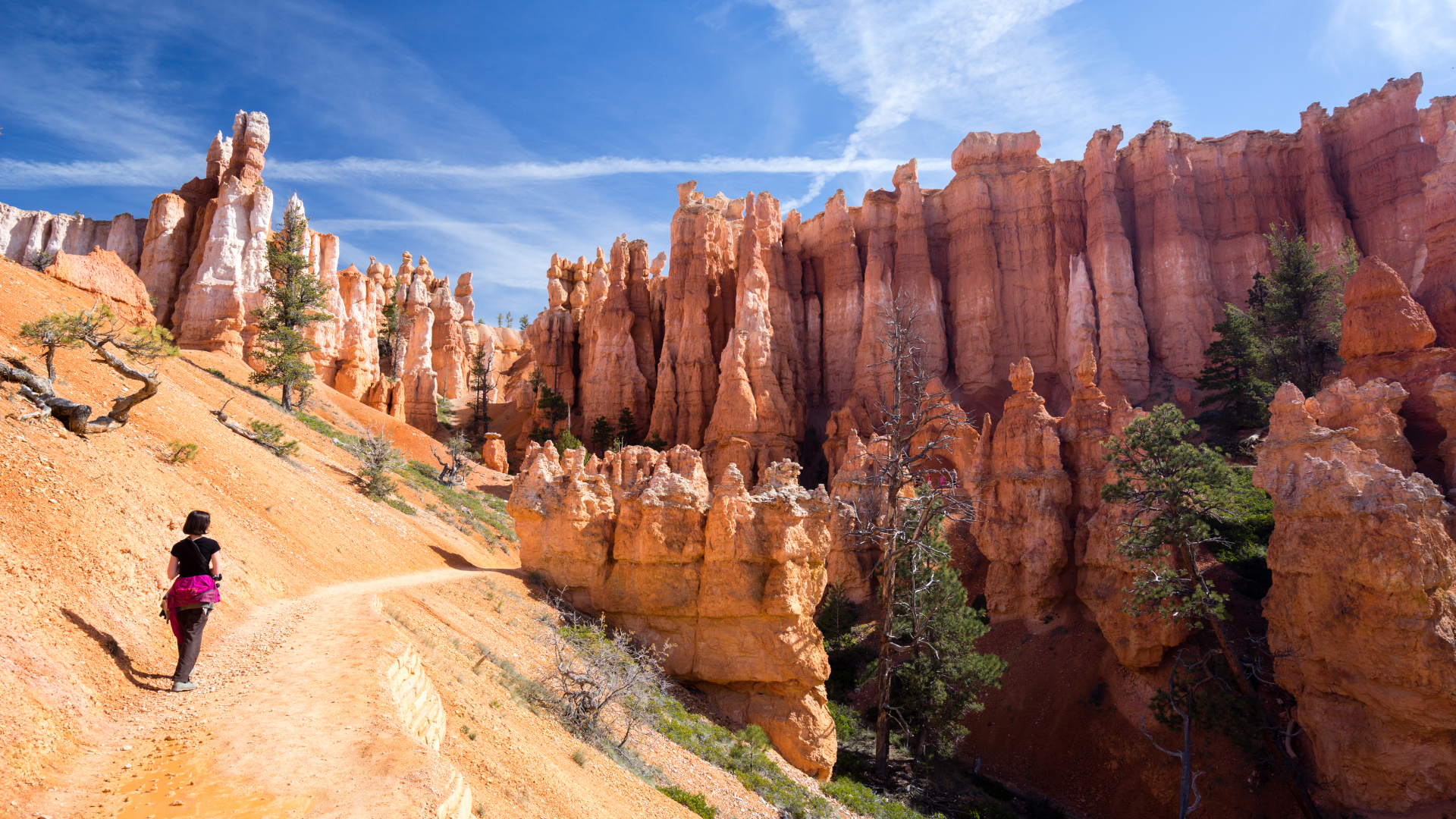
There’s nothing unusual about hot weather in the desert in the summertime. Even without the current heat wave sweeping the western US, areas like Canyonlands and Death Valley are always going to be scorching come July and August. Despite that meteorological reliability, however, people still want to don their best hiking boots and see the natural wonders of the Grand Canyon, badlands and Mesa Arch.
No one can blame you for wanting to see these dazzling sights, and summer is often the most convenient time to travel, but it unfortunately often brings hiker deaths and heat-related illnesses. Just last week, we reported on three deaths in western National Parks and another three people died over the weekend in Canyonlands. These incidents are always tragic, but are often avoidable.
I live in Scotland these days, where we don’t have any desert or see many hot days, so you might think it laughable that I’m writing this, but for many years, the deserts of Utah were my stomping grounds and I've had many great adventures from Death Valley to Joshua Tree. I’ll recommend visiting these otherworldly landscapes to anyone who will listen, but it’s important to take extra precautions to protect yourself from the intense heat in these areas during the summer months.
In addition to practicing basic hiking safety, such as having a plan and telling someone where you are going, carrying a satellite communicator and understanding the signs of heatstroke, the following are some important practices to help keep you safe in hot desert conditions this summer.
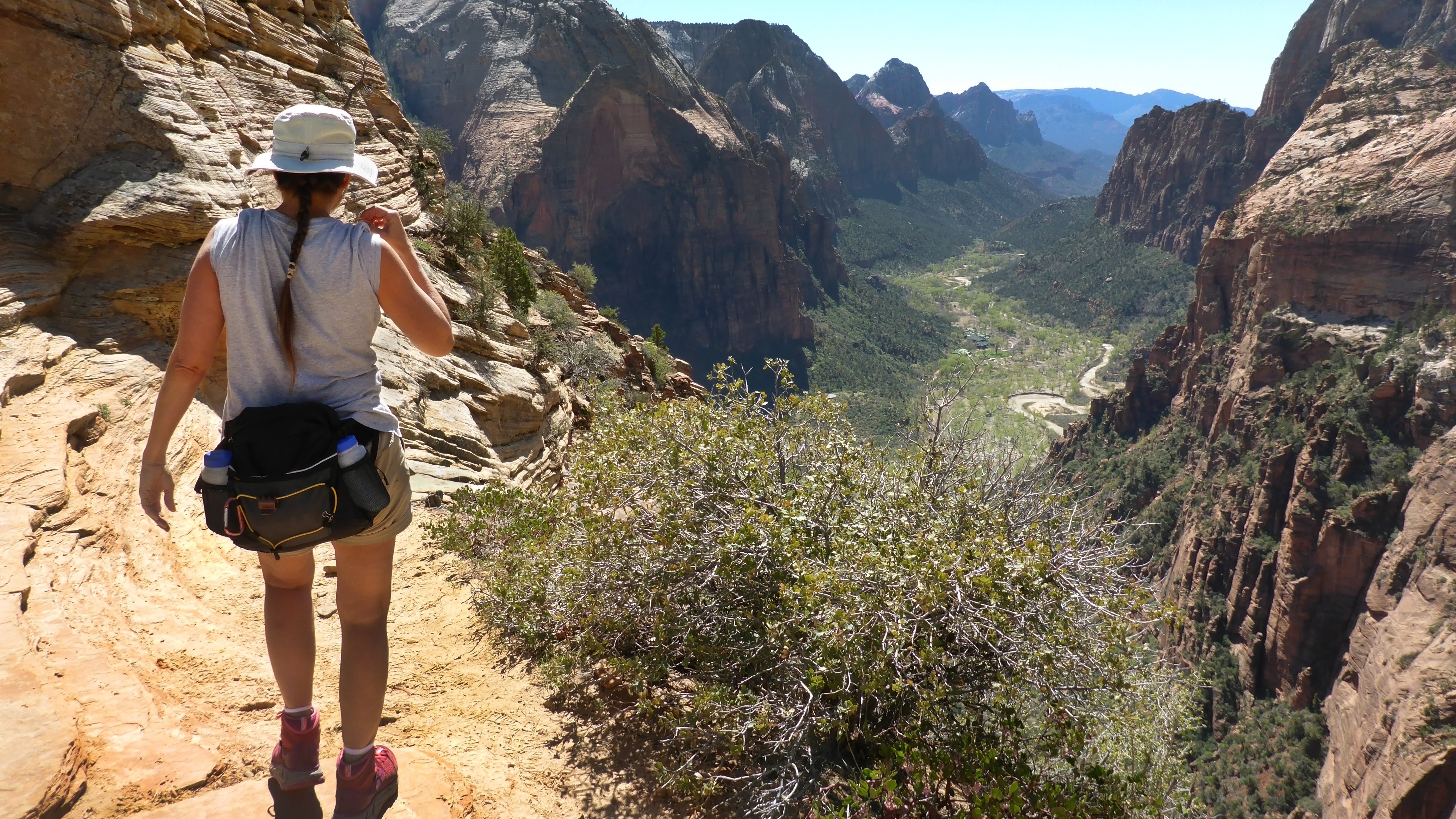
1. Visit outside of summer
I know you don’t want to hear this (and the local tourism boards probably don’t want me to write it) but if you really want to hike in desert conditions, doing it outside of summer is the best choice. My best trips to places like Utah’s National Parks were always in the spring and fall. Not only is the weather positively delightful, but there are far fewer crowds.
If your trip can wait, consider rescheduling it for the fall, winter or spring and head someplace like Isle Royale (recently named best National Park in the US) or Acadia National Park in Maine which will be busy but not dangerously busy.
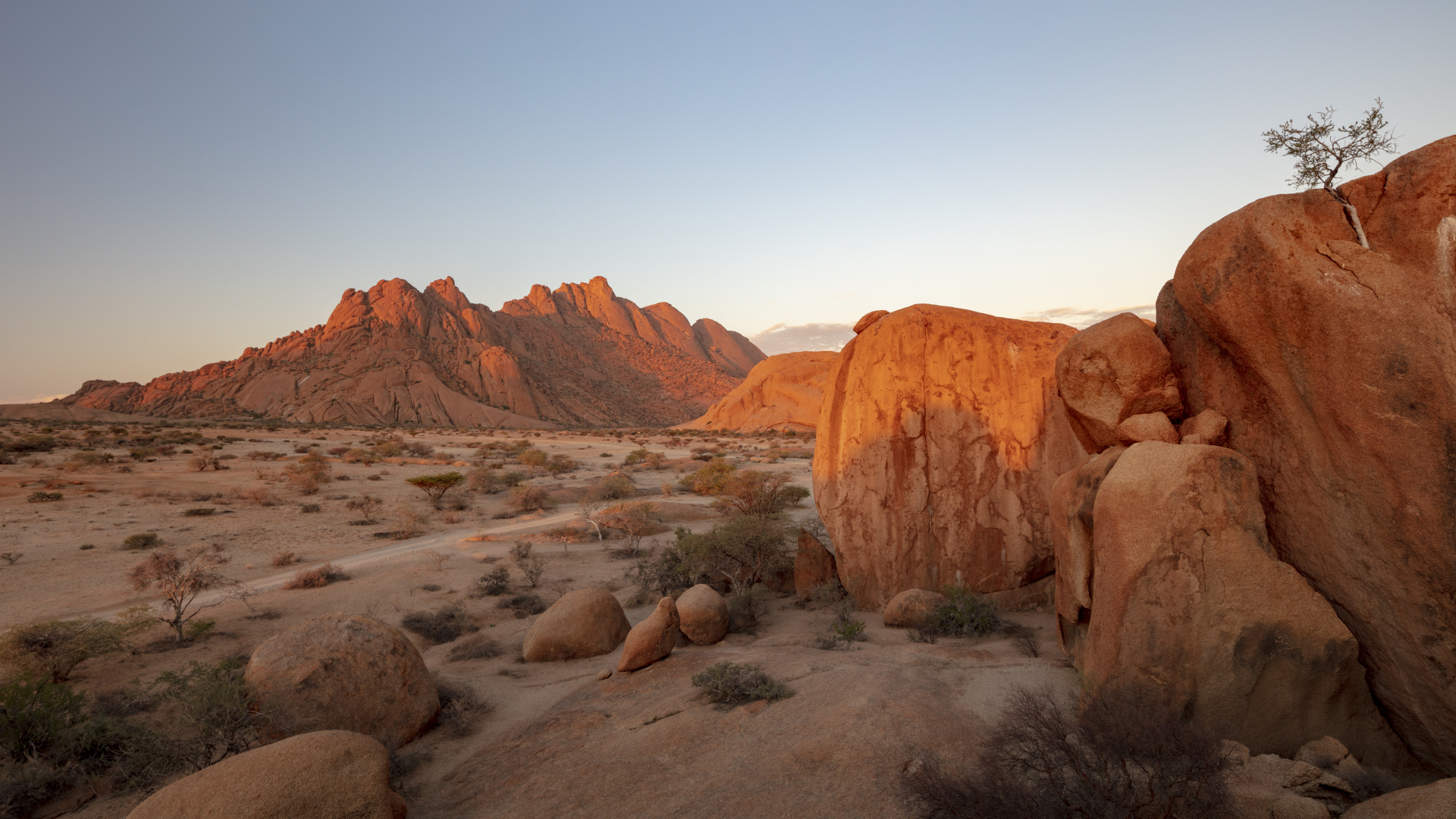
2. Hike early or late
If summer is your best bet for visiting these precious places and you want to get out on the trail, do it early. The official advice from National Parks like Death Valley is usually to avoid the times between 10 a.m. and 6 p.m. which is the majority of the day, but don't worry, all is not lost.
In the middle of summer, the sun is up in scenic spots like Moab by around 6 a.m. and it starts getting light before that, so I used to set my alarm bright and early and be at the trailhead while it was still fairly dark. This means you can get a few hours of hiking in and be back to the car by 10 a.m. as long as you don’t plan too long of a hike. Bring your headlamp if you’re getting started really early and leave yourself a margin for getting back to your car as it can be extremely hot by mid-morning.
Evening hikes are also an option and areas with amazing rock formations and west-facing views can provide a great opportunity to enjoy the sunset, or stargazing if you stay out long enough. It’s not as cool as in the morning because those rocks hold a lot of heat, but if you start at 6 p.m. it will be more tolerable and you can still get a couple of hours in. Just don’t forget a light source.
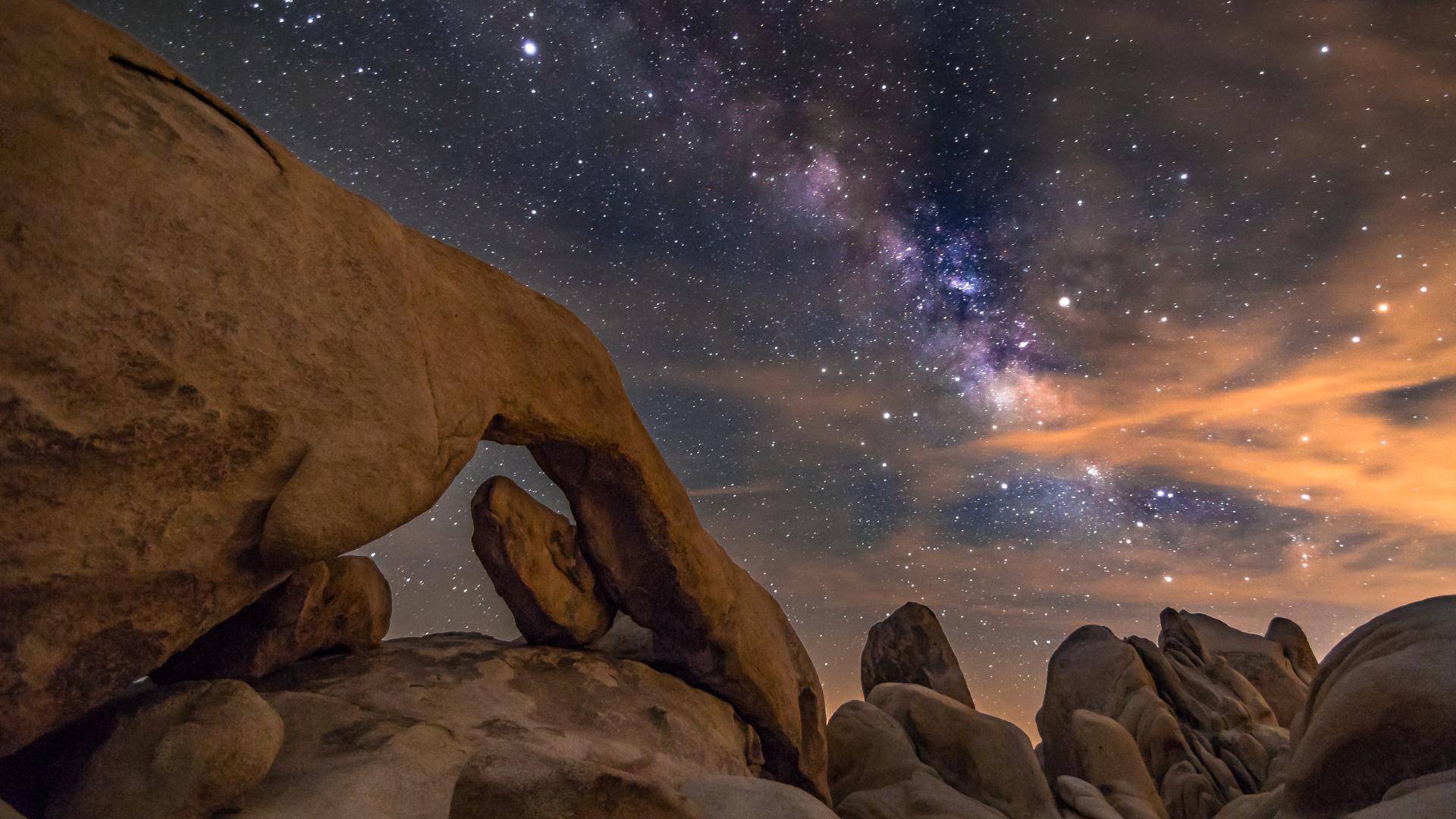
3. Bring more water than you think you need
I’m not trying to undermine your intelligence here. I know that you know that hydration is important when it’s hot out. But even experienced hikers underestimate just how much more water they need in hot environments all the time. In the desert, if you run out of water, there isn’t a backup source.
If you think bringing an extra water bottle will cut it for a three-hour hike, think again. The official advice from Canyonlands National Park is to drink a liter of water per hour as well as consuming electrolyte gels or salty snacks to replace salt lost through sweat.
For hot conditions, I tend to use a large hydration bladder that carries at least three liters of water rather than lugging extra bottles, and I’ll bring several five-gallon jugs of water in my car for longer trips. Rather than drinking just straight water, I also mix in an electrolyte-loaded sports drink such as Tailwind Nutrition. This means you have to clean your hydration bladder afterward, but it could help you avoid dehydration and save your life.
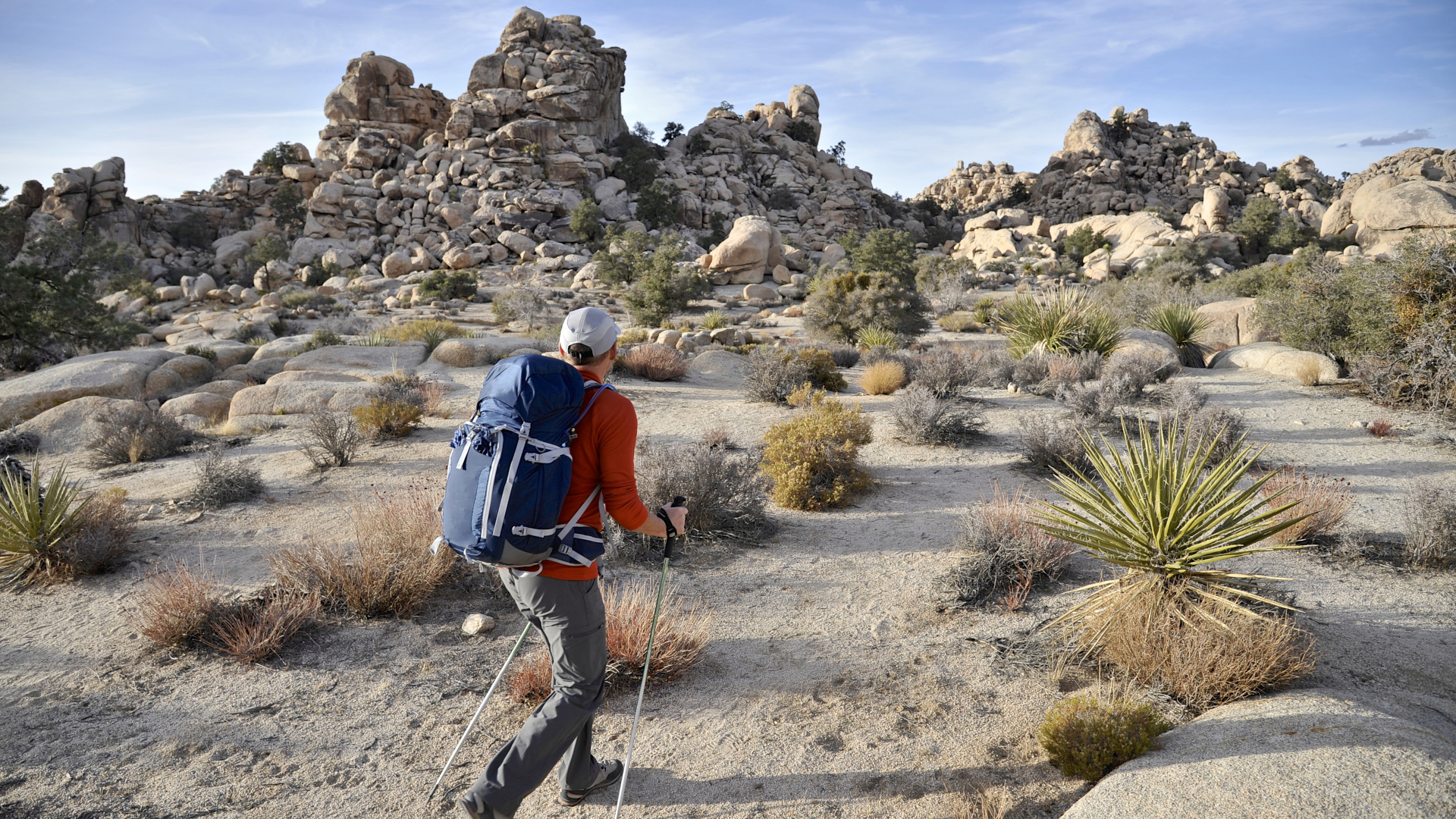
4. Protect your skin
When it’s hot out, it’s tempting to want to throw on skimpy trail running shorts and a tank top but it’s actually better to cover your skin to avoid sunburn, which will only further dehydrate you, especially since shade is scant in the desert.
The best approach to dressing for hiking in hot desert conditions is actually to wear loose, lightweight, light-colored and breathable layers such as long hiking pants and a long-sleeved base layer. Since yo'ure not expecting wet and cold weather, you can even break the cardinal rule of hiking and wear cotton as long as it's light and loose.
Don’t forget to wear a wide-brimmed hiking hat to keep the sun off your head and shoulders and apply sunscreen to any exposed skin. The good news is that you can wear hiking sandals instead of sweaty shoes so your feet will be happy.







